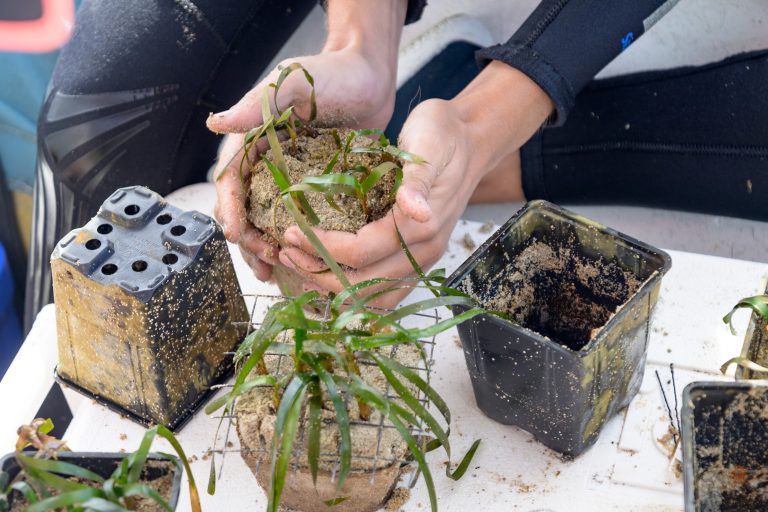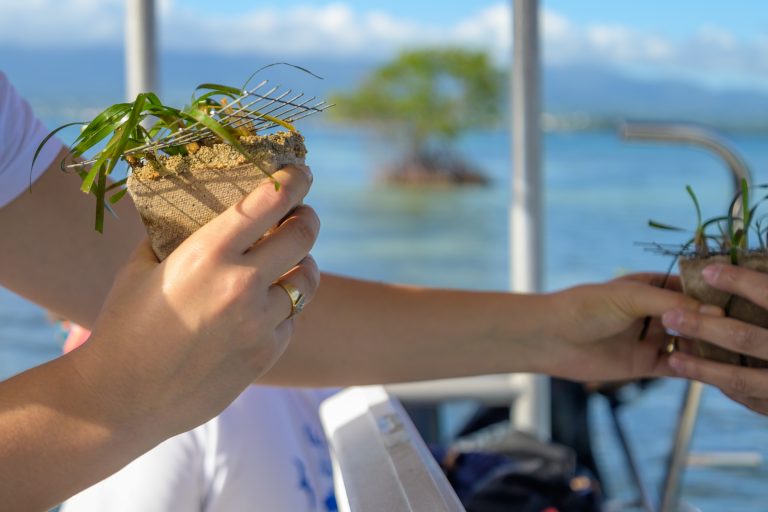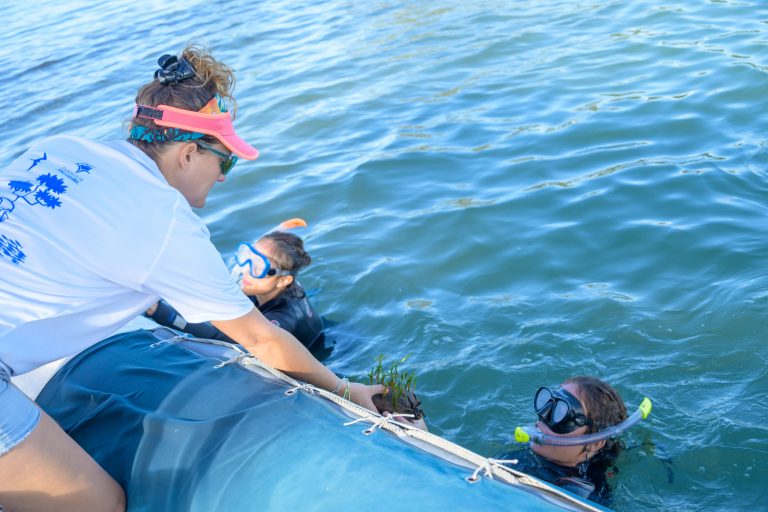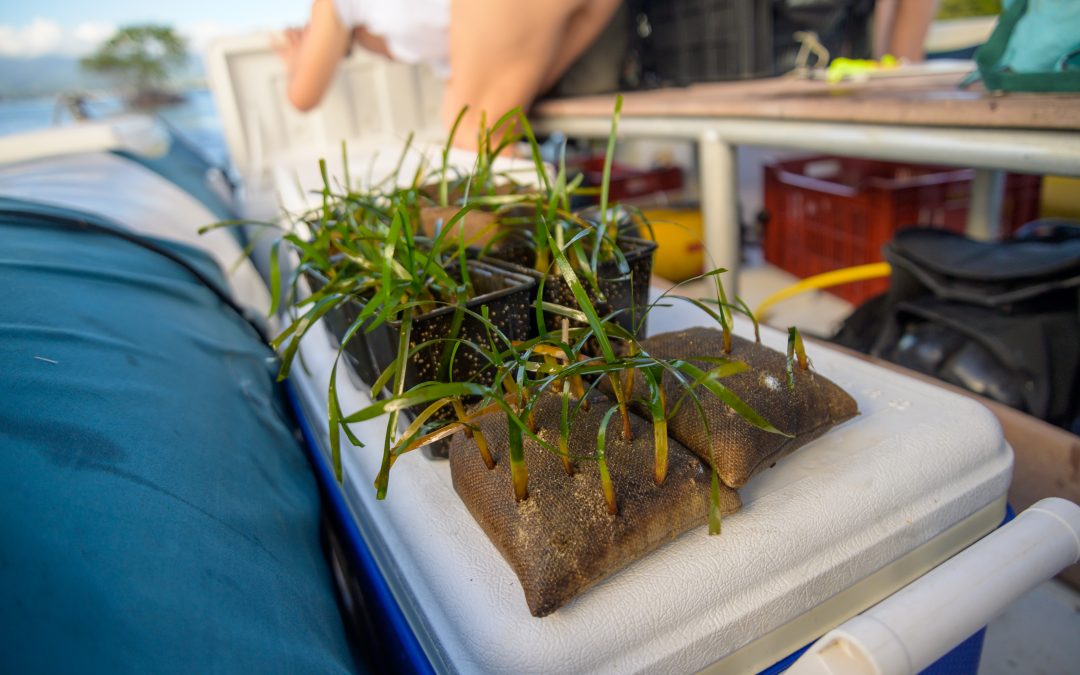The search for solutions to restore seagrass beds is a major focus of the port’s environmental policy. But even before restoration can take place, it is necessary to develop and control : plant production, cultivation and establishment in the natural environment. These are crucial and complex steps in a field that is still little studied. An on-going process.
THE CHOICE OF AN INNOVATIVE METHOD
Seagrasses are descended from terrestrial plants. They have a development by fructification and by their rhizomes. In the world, the most commonly used method of restoration is the cutting of rhizome tips from natural seagrass meadows. This method requires significant sampling in the natural environment. In order to limit its impact on the seagrass meadows, Guadeloupe Port Caraïbes has chosen a more innovative method through the collection of seagrass seeds. The first steps consisted in identifying the flowering period for seagrass (Thalassia testudinum) in Guadeloupe and observe the germination process of these seeds until the production of plantlets in a nursery. These two steps were quickly validated; the next step was then to estimate the feasibility of transplanting the plantlets into the natural environment.
A first transplant on a modest scope allowed us to identify some of the pressure factors facing young seedlings in the natural environment. This test was also used to evaluate whether the selected plantlet attachment technique is effective.
Three months after this operation, a first assessment is necessary. At first glance, the plantlet fixation technique is effective since the fixation supports and some seedlings are still present on the site. Unfortunately, we note that sea urchins and sea cucumbers are formidable predators : a large proportion of the young and tender plantlets. The balance is thus mitigated since nearly 80% of the transplanted seedlings have disappeared.
However, based on scientific studies, a survival percentage of 20% is commonly observed for similar seagrass transplant experiments. The Grand Port is now mobilizing its scientific team to improve seagrass transplant techniques, as the new season for collecting the fruits of Thalassia testudinum begins in May.
Photo credit: HappyMan Photography





